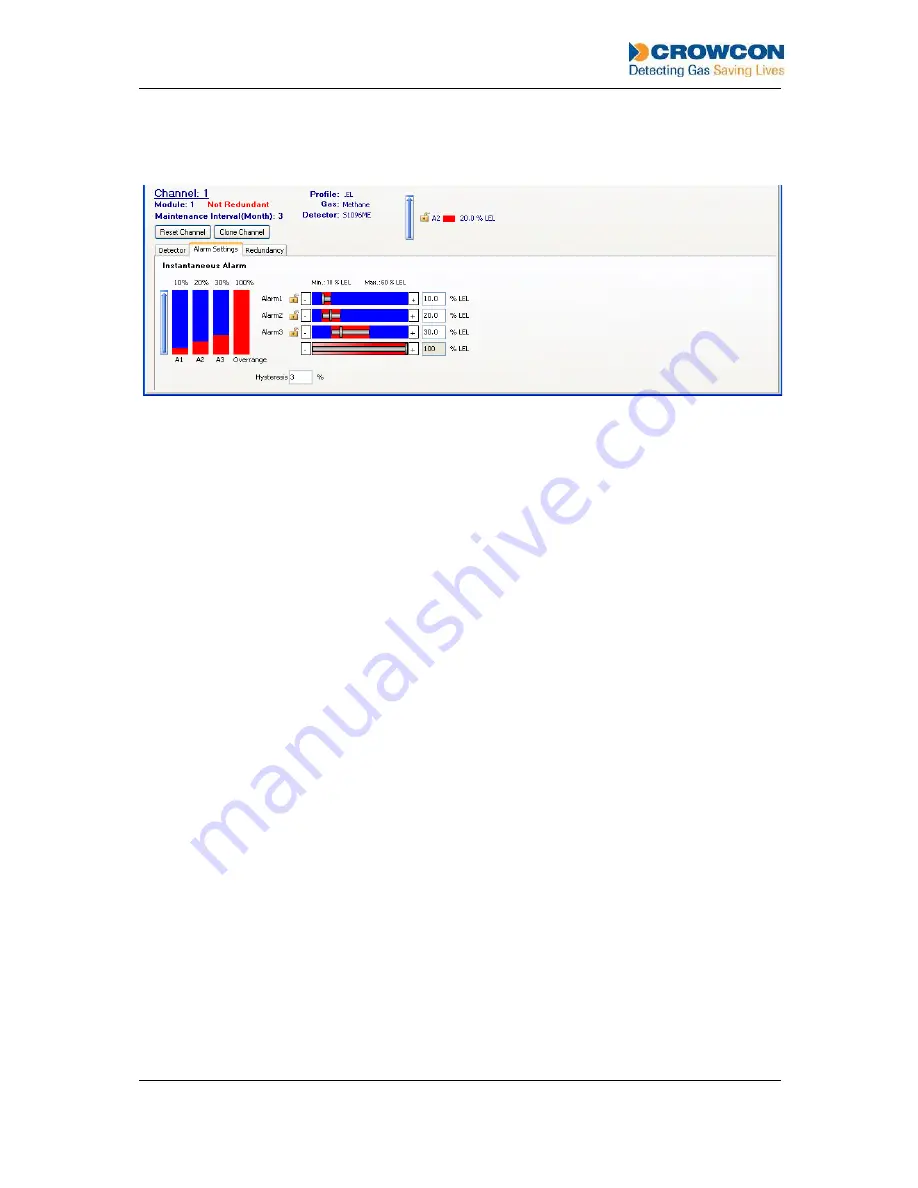
Addressable Gas Detection System Manual
Addressable System Manual
61
Issue 2, January 2015
Screen for “Alarm Settings”
Fig. 4.5.5 d) Alarm settings details in case of instantaneous thresholds
In the submenu
“Alarm Settings”
the threshold values for all three alarm levels can
be modified within a specified range indicated by the red bar and a sliding control.
The left arrow going upwards is indicating the “increasing alarms” of the LEL profile
where the alarm levels from alarm 1 to alarm 3 correspond to increasing
concentration.
The configuration software is checking the user input for plausibility. There are some
general rules e.g. alarm level not below 5% of the measuring range, no higher alarm
(alarm 2 or 3) is settable to a level lower than the lower alarm (alarm 1 or 2). Other
restrictions are specified in the measurement tasks (profiles).
The horizontal red bars indicate for each alarm threshold the range within which
alarms can be set or modified.
In the profile
“Oxygen deficiency”
the Oxygen concentration corresponding to
alarm 1 will be higher than for alarm 2 and alarm 3. This will be indicated by the left
arrow going downwards for “decreasing alarms”.
“Overrange”
typically is fixed at 100% of the measuring range. Only if in a profile a
fourth alarm level is required “Overrange” will be used as this fourth alarm and the
value is settable.
The
“Hysteresis”
for the alarm levels is indicated below the horizontal alarm bars.
This value can be modified depending on the profile.
An open or closed lock on the left side of the horizontal alarm bar is indicating the
non latching or latching status of each alarm level. The profile specifies if the latching
status may be modified or not, e.g. in the LEL profile the latching for alarm 3 and
overscale is mandatory.






























